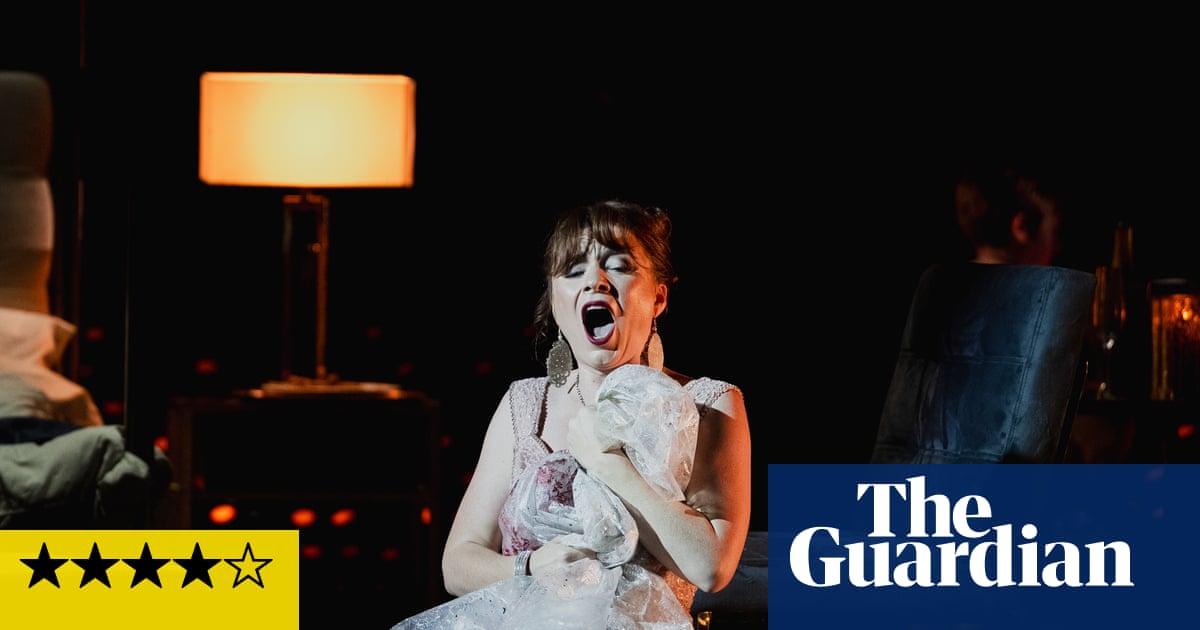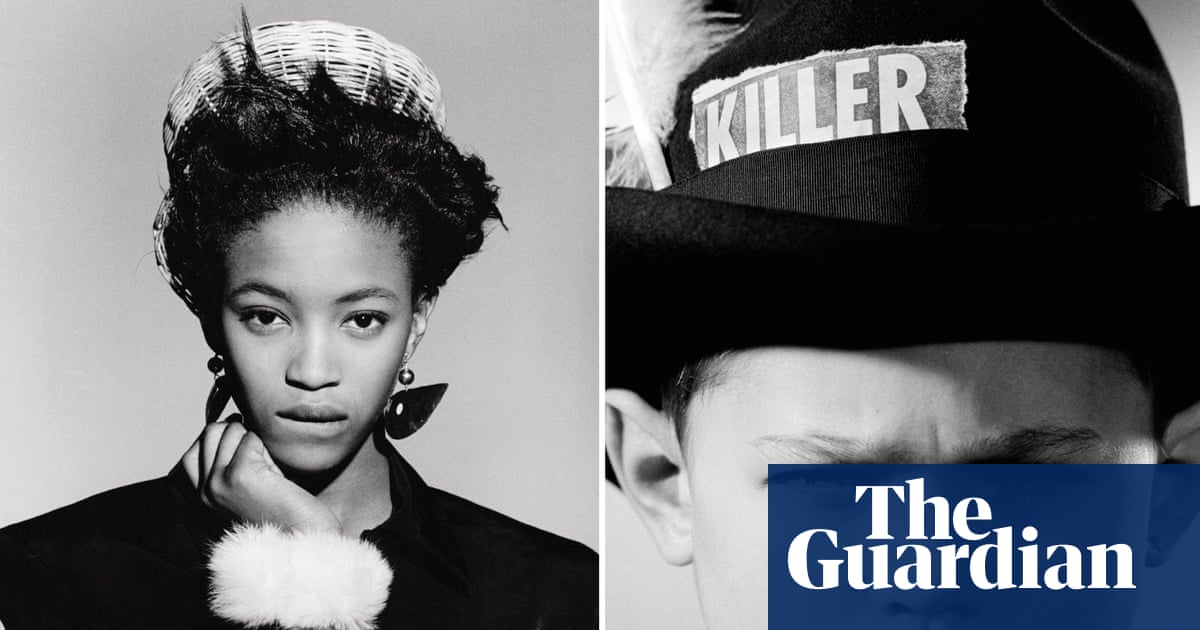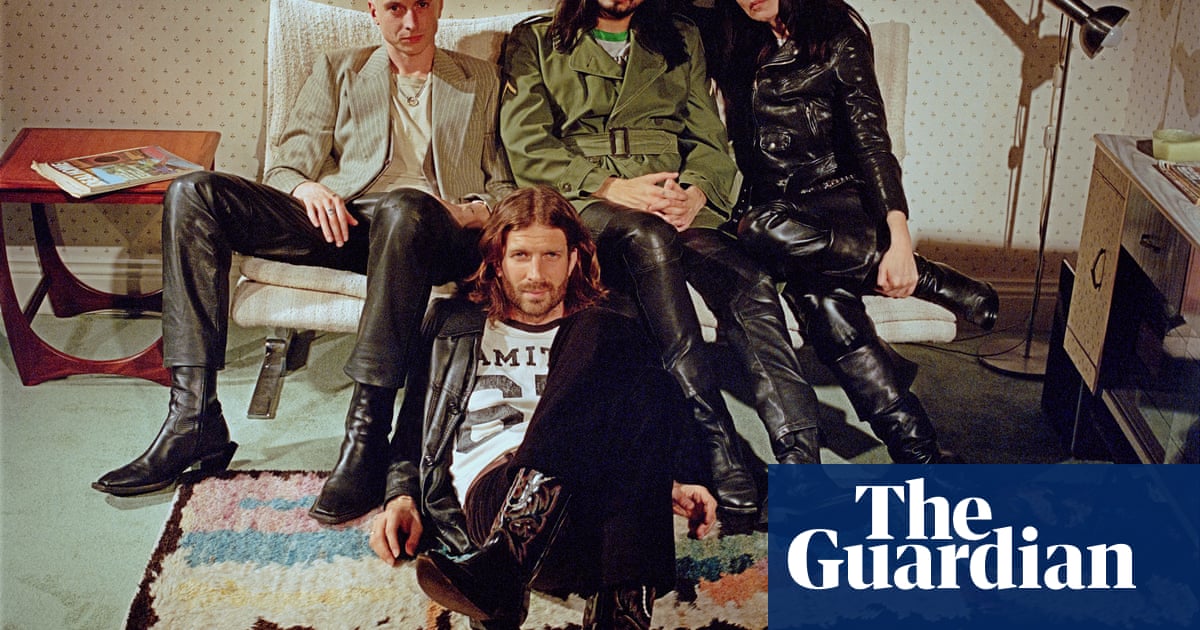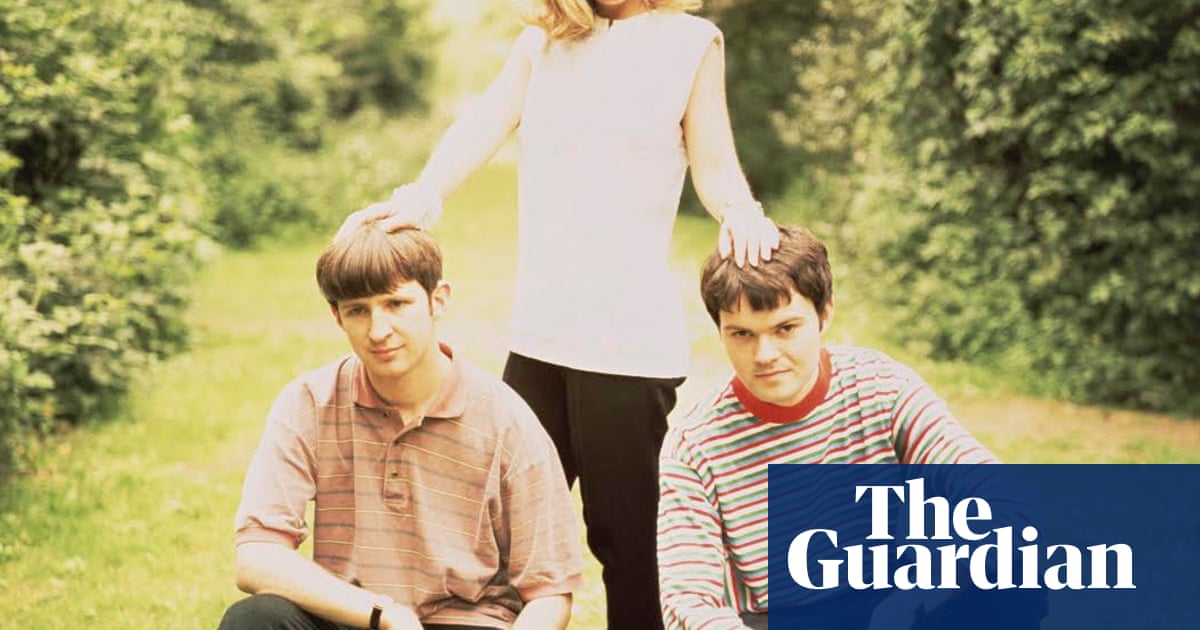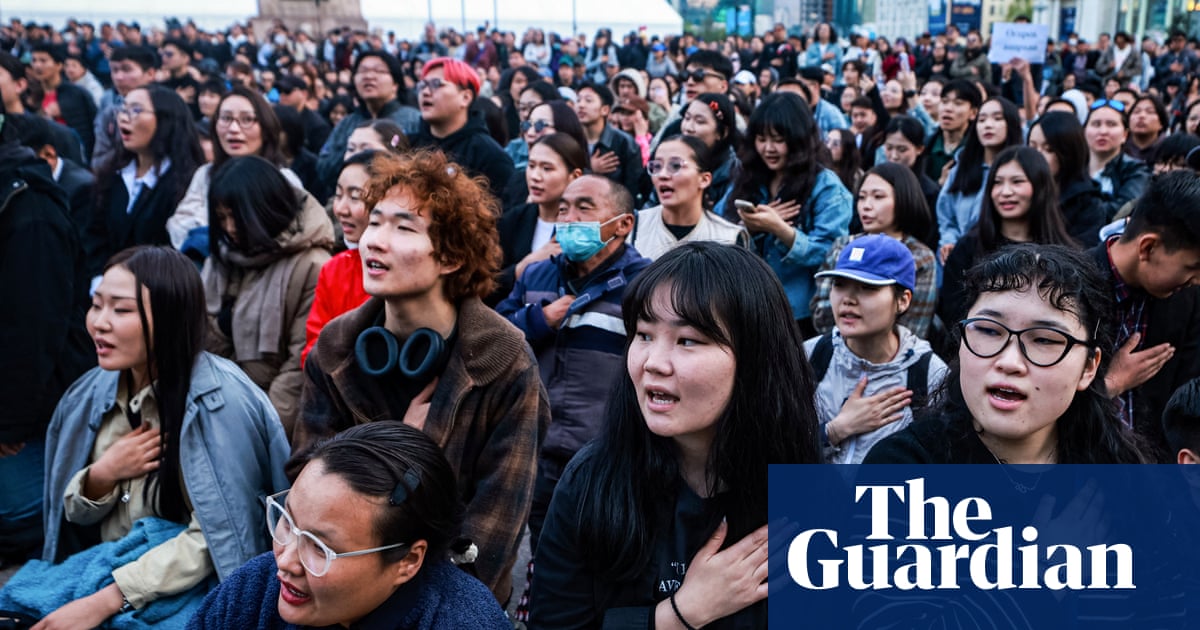It is a bright and sunny day in Somerset, and out on the neatly mown lawn at Hauser & Wirth, Niki de Saint Phalle’s voluptuous Nanas (“girls”) are positively sparkling. There are three of them (a nod to Botticelli’s three graces): one silver, one black, one white, all made from polyester jazzed up with colourful mosaic and shimmering mirrors. She has captured them mid-twirl, arms tossed in the air like they just don’t care, legs kicked out at jaunty angles. They are joyful and radiant, monumental and robust, dancers and warriors.
Saint Phalle, a French American artist, began creating her abstract sculptures of women in the mid-60s, a decade after she first met the Swiss sculptor Jean Tinguely in Paris. He was married and so was she but five years later, both divorced, they got together; by the time they were married in 1971 both were seeing other people. It was a complicated, sometimes competitive relationship – romantically and artistically – that saw them collaborate and support each other creatively until Tinguely’s death in 1991. Saint Phalle looked after his legacy until her own death in 2002. Now, on the centenary of his birth, a new exhibition is presenting their work side by side – at least once we get off the grass and into the gallery.
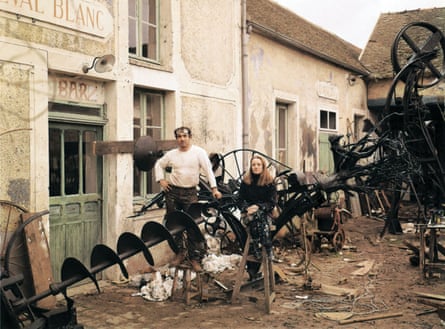
As if to make up for the solo Saint Phalle welcome outside, the first room is almost entirely dedicated to Tinguely’s strange kinetic sculptures – presided over by another powerful Saint Phalle belle. Having grown up in Basel, where he later worked as a window decorator and studied drawing, Tinguely moved to Paris in 1952 and began to animate his Calder-esque wire works with electric motors. Here, half-a-dozen contraptions made with scrap metal and found materials from branches to rubber belts stutter to life every few minutes, clanking and clattering in time with their moving parts. Originally visitors would have pressed buttons to make them move. Sadly, now they’re old and rickety, they are programmed to turn on one by one (though apparently the rockers can be a bit erratic).
Built from the 1950s until his death, Tinguely’s whirring designs might verge on comic but they’re as relevant today as they were when first exhibited. A physical (and audible) manifestation of the anxieties of automation, his semi-robotic assemblages – among them his Métamatics, or drawing machines – were initially met with resistance. At Hauser & Wirth, one device doodles in pen on to an unfurling roll of paper while another scribbles on a single sheet. Standing in front of them, questions inevitably arise about authenticity and the creative capabilities of man vs machine.
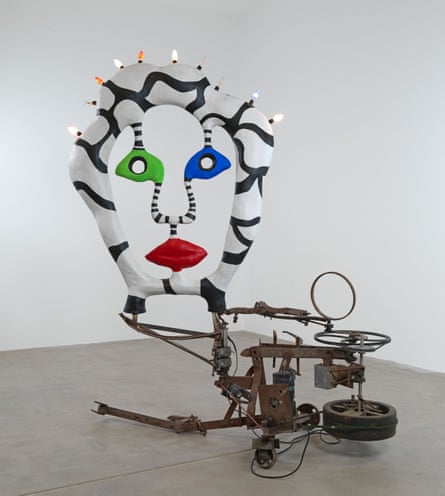
Viewed alongside his angular scrap metal, Saint Phalle’s sculptures are deliciously colourful and curvy. When viewed together, they hum with life. The couple began collaborating in the late 1950s; for her first sculpture, she commissioned him to create an iron armature which she covered with plaster. A black-and-white polyester head with a rosy pout sits on the shoulders of a motorised contraption made from wood and iron; when the motor starts, the head shifts back and forth, its lightbulb crown flashing. Elsewhere, a miniature nana performs an arabesque on an iron stand that spins her round like a ballerina in a jewellery box. On display for the first time are the gold pieces of furniture Saint Phalle made for A Dream Longer Than the Night (1976), the bizarre and frequently frightening film she wrote, directed and acted in with Tinguely.
There’s often a shadowy undercurrent, as well as strength in the face of adversity (in Saint Phalle’s case, sexual abuse and a strict Catholic upbringing). It’s there in the 11 roebuck skulls Tinguely fixed to a bicycle wheel in 1990, titled The Infernal Circle of Death. It’s there in Saint Phalle’s provocative plaster and bronze altarpieces, piled high with small plastic dolls which bring to mind the good and the damned imagined by Hieronymus Bosch. In 1961 she started her famous shooting paintings, firing a rifle at low reliefs and exploding bags of bleeding paint across the surface. Produced against a backdrop of political unrest in France, the three on display burst with rage and defiance.
after newsletter promotion
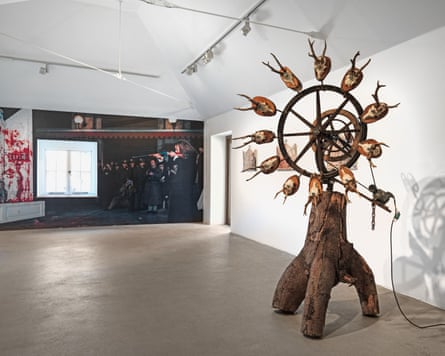
Despite their different backgrounds – she came from an aristocratic French family; he was working class – both were socially and politically engaged and tirelessly devoted to their art. The final room features intimate drawings and letters by Saint Phalle, with creatures real and imagined and a load of love hearts. Tinguely is here, too, his name squiggled in ink, a rusty chariot-like contraption supporting a Saint Phalle-style goddess Athena, sensuous and strong. And there, glimpsed through the window, are the three Nanas on the lawn, still twirling, still sparkling.
It may be Tinguely’s centenary but Saint Phalle is the star of this show – and the show is all the better for it.

.png) 3 months ago
58
3 months ago
58
